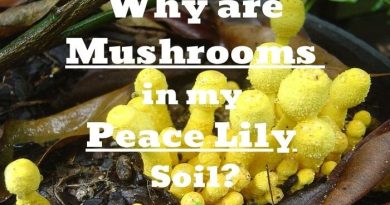Why Is My Topiary Dying? Find Out Now!
Topiaries trees are a lovely addition to any garden or landscape including mine, adding elegance and sophistication to outdoor areas. However, if your once-thriving topiary has become wilted and lifeless, you may be wondering what went wrong. In this article we will answer to the following question: Why Is My Topiary Dying?
| Causes why Topiary is dying: |
|---|
| 1. Disease and Pests |
| 2. Wrong Watering Habits |
| 3. Poor Soil Quality |
| 4. Root Bonding |
| 5. Improper or excessive pruning |
| 6. Lack of nutrients |
| 7. Light deficiency |
Reasons Why Topiary is Dying
1. Disease and Pests
Fungus (phytophthora, cylindrocladium, and volutella)
Fungi grow in a moist and warm environment; mostly appear between closely attached twigs or on the ground where leaves have fallen for a long time. In topiaries, three types of fungi are very common Fungi phytophthora, Fungi cylindrocladium, and Fungi volutella.
However, it is very difficult for a common person to accurately identify the type of fungus. Therefore, they are identified in labs after testing.
You can prevent your topiary shrubs from getting a fungus attack by creating proper drainage, keeping an open foliage crown, removing dense growth to enable air circulation, and boosting nutrition.
For foliar application before the attack spray of neem oil is suggested. Whereas, actinovate is a fungicide based on organic production and is safe to use against dying topiary.
Blight (Helminthosporium turcicum Pass)
Blight is transmitted by the spores of the fungus that are shed on the soil or foliage of the topiary tree by wind water, insects, and animals. Rainwater or dew moisture can cause fungal spores to multiply since they need moisture to spread and causes topiary dying.
It can damage a portion of the topiary or hedge, causing brown patches on the leaves, rapid shedding of leaves, and black streak marks on topiary twigs.
All affected leaves or twigs should be removed properly and burnt or discarded when blight is identified. Use wood chips, wood small straws, or another natural mulch to cover the area around the plant’s base to prevent fungal spores in the soil from splashing.
You can also use fungicide containing the teleomorph Setosphaeria turcica chemical, which can be use to prevent topiary from dying due to blight.
Canker (Cytospora canker)
The majority of cankers are brought to the topiary by fungi that attack the bark tissue of topiaries. Whereas, some can also invade the interior tissue as well as the bark, leading to canker rots.
In some topiary, it affects the leaves too by turning them brown with a slight upward curl. If untreated, it will split the bark from the stem, the topiary loses vigor, and slows down its growth which leads to the topiary dying.
At an initial stage, its treatment includes the cutting of affected branches in spring and foliar application of copper fungicide spray.
If the canker has spread in most of the branches then this topiary should be separated from other healthy plants and properly discarded because the chemical treatment will not work in severe conditions.
Psyllid
Psyllids are present in the phloem tissue (in the center of the stem where food moves). It can enter the topiary through water and pests, and is sometimes already present in the stem during propagation.
Psyllid affects the aesthetic beauty of the topiary by damaging its leaves along with the appearance of white powder on the tips causing the topiary to die.
If the topiary is slightly affected then pruning will help. Psyllids in severe conditions can be eradicated by insecticidal soap, horticultural oil, systemic neonicotinoids, or other chemical insecticides.
Spider mites
Spider mites appear on topiary which is dealing with drought conditions or lack of water and over application of nutrients.
They are quite difficult to spot on the topiaries due to their very small size until there is a more severe infestation of the topiary. However, webs are visible and discernible.
Use a white piece of paper to cover a section of the plant that is browning to look for spider mites. Both the green and impacted portions should be tapped on the plant. If there are spider mites on the plant, they will fall from the topiary and seem to crawl on the paper.
Some people wipe the stems with lukewarm water to decrease spider mites attacks. Neem oil and malathion can be used to control them. The majority of gardens carry both of these goods.
Whereas, insecticides like horticultural oil, insecticidal soap, and chemical containing permethrin(natural extracts from the chrysanthemum flower) or pyrethrin insecticide works effectively against spider mites. For precaution, next season, before their attack spray the topiary with insecticide active infestation spider mites.
2. Topiary dying due to Wrong Watering habits
Over-watering or under-watering can cause the topiary to die, so it is important to find the right balance.
Overwatering
If you are overwatering your topiary trees then the first symptom is seen on the soil i.e. the appearance of green algae, after that its roots start rotting, which results in yellowing and dropping of leaves. Some topiary trees are dying because their leaves starts shedding and burning from the tips.
Treatment
You can address this condition by hoeing in the soil so the green slits of algae will break and more aeration occurs in the soil which will evaporate the water. The second task is to water the soil when the soil will not stick to your finger after touching it.
Under watering
The first symptoms of under watering are wilting of topiary leaves or leaves that becomes thinner especially, the younger leaves. The soil in the pot left the pot circumference meaning gaps that appear between the pot and the soil or random cracks on the surface of the soil.
The leaves of topiaries may become completely dry and die if water stress conditions are for a long time. If it is a round or compact-shaped topiary then the inner main trunk loses leaves.
Its solution is to water the topiary fully for the first time and after 10-15 minutes when soil seeps all the water, water your topiary again to prevent topiary dying.
In the 2nd watering time, water the topiary fully and then leave it, after that watering habit should be kept on the requirement of plants as normally recommended.
If the topiary is grounded directly in the garden then let the hose end open for 30-35 minutes, so the plant will soak deeply. These practices will help the topiary to struggle from dying under drought stress and become normal.
The other solution which is very new as far as I know and adopted by fewer people is the spray of moringa leaves, while careful with making the concentration; a higher concentration may burn the plants. The most used and safest concentration is a 3ml extract of moringa leaves in 100 ml of water.
3. Topiary dying due to Poor Soil Quality
Poor soil means the soil is very compact, with hard clumps, poor drainage, or heavy soil. This type of soil has the least aeration and water may stand in the soil for too long which also blocks air, causing topiary trees to die.
The roots don’t get enough oxygen for production and as a result shrubs show very slow growth. In a long-term situation, topiary roots suffocate too much, their growth stops and start dying (Rot/ Fungal attack) which may lead to the death of the whole plant.
Treatment
Its simple treatment is making a good soil mixture that contains compost, soil, and silt with 1:2:1. You can also add more additives according to your choice.
Transplant the topiary in the new mix where it will grow lush green. Make sure that you do not water the topiary for at least the last 3-4 days because sticky mud will make the transplanting very difficult.
4. Topiary dying due to Root Bonding
The continuous shedding of leaves in the Eugenia topiaries and other flowering topiaries like silvery topiary flower buds is due to root bonding in topiaries. In this condition, the soil of the pot will dry out quickly because root to soil ratio is decreased and the roots absorb the water quickly.
As a consequence, the topiary is dying, having the following symptoms: dropping of mature leaves and then if untreated the younger leaves will fall too.
Treatment
Its solution is to repot the topiary as soon as you can. Make a good soil mix with good water and nutrition regime. These practices will rejuvenate your topiary quickly.
The topiary should be repotted or transplanted into a bigger pot after every 2 years. You can also transplant it directly into your garden where it will get enough light and be nutritious.
5. Improper or Excessive Pruning
Topiary trees can be harmed and made weaker by improper or excessive pruning, which increases its susceptibility to illness and dying.
Improper pruning is due to the lack of care and mostly happens when topiaries are left to grow for a long time and then excessively cut down into a shape.
The reason is that when the topiary was grown much denser from the outside, it would block the aeration and light to penetrate inside the crown.
As a result, the internal crown sheds leaves, and outside intense pruning will leave the whole crown bear with very few leaves. The plant will go under stress conditions and become weaker as described above.
Treatment
Its solution is to do regular pruning so proper light penetration and aeration will be maintained. During the growing season, the topiary needs pruning at 2-3 weeks intervals. This time interval may vary as it depends on the variety of the topiary and also the shape of the topiary.
6. Lack of Nutrients
Potted types of topiaries required fertilization as the nutrients provided by the compost were soon lost. Feeding your topiary is essential for its health, as it prevents it from dying and promotes its development.
If the topiary tree is thriving from a lack of nutrients, especially macronutrients (NPK), it will show quick symptoms like leaves turning copper in color, burns on the leaf tips, and the internal leaf veins shrinking.
Treatment
The most practical approach now-a-days is to utilize slow-release nutrition and fertilizer granules, depending on how long they last. The topiary needs a few weeks to rejuvenate after no nutrients. However, slow-release nutrition and fertilizer might not be essential for grounded topiaries.
7. Lack of Light
Some types of topiary, like camellias topiary require lots of sunlight to thrive. However, if it is placed near the front door, the sun will never touch the rear of the topiary which leads to the topiary dying. The plant typically begins to become yellow before turning brown from the shaded side.
Treatment
You will need to relocate the plants further away from the home if this is a grounded topiary. To ensure that the plant receives enough sunlight on all sides while it is in a pot, you can rotate its pots every few days. If you are growing topiary inside your home then you have to arrange an artificial light.
How to Prevent Topiary from Dying
- Water your topiary on a regular basis, but not so much that the soil becomes saturated.
- The soil should drain well and have the proper pH balance for the plant. The plant might die if the soil is compacted or lacking vital nutrients.
- Regularly examining the topiary and intervening, if any symptoms of infestation or disease appear will help prevent this.
- Regular pruning is necessary to keep the topiary in form and avoid overgrowth, but over-pruning can stress the plant and cause it to die.
Topiary pruning is often done twice: first in mid-June, after the initial wave of growth, and again at the end of September, to ensure that the silhouettes stay tidy all winter. It must be done in humid conditions to avoid scorching the leaves.
The planting is done in the winter to allow the roots to grow well before the summer. Important: soak the topiary root balls in water until there are no more bubbles before planting (for containers). Even if it rains, water well after planting.
Using an ordinary knife, “tap” the trunk and, where you hear an empty sound, cut the bark – most likely, there is just one of the cavities. Remove all the bark in such areas, and cover the cut with garden pitch. The tree may start to grow again.
Immerse the plant for at least thirty minutes in water at room temperature, until bubbles appear on the surface. Then transplant it back into the pot, clean the dry leaves and place it in a shady place, away from the sun’s rays.




